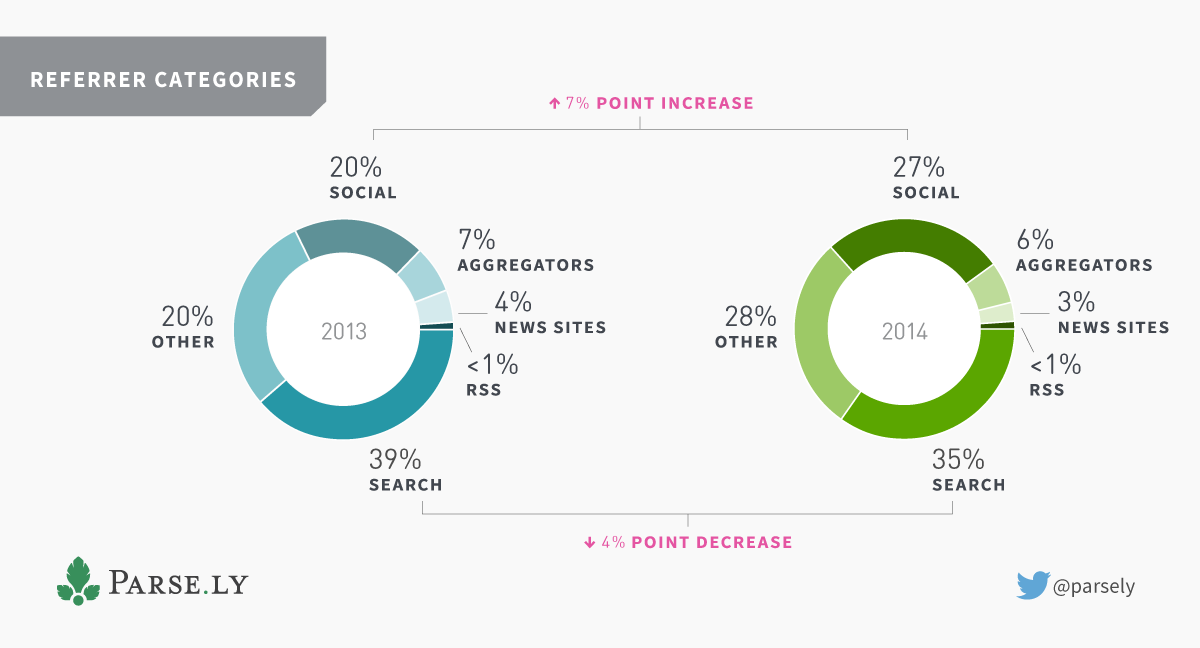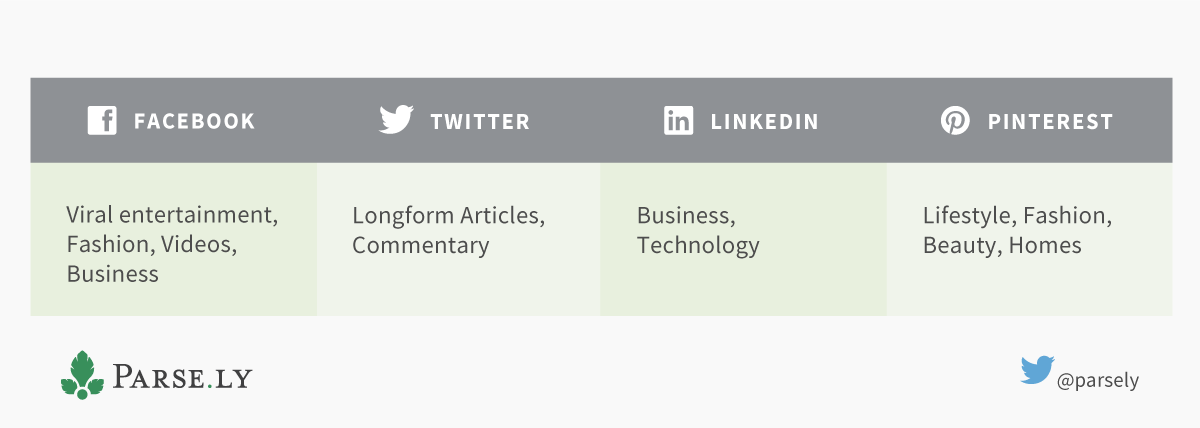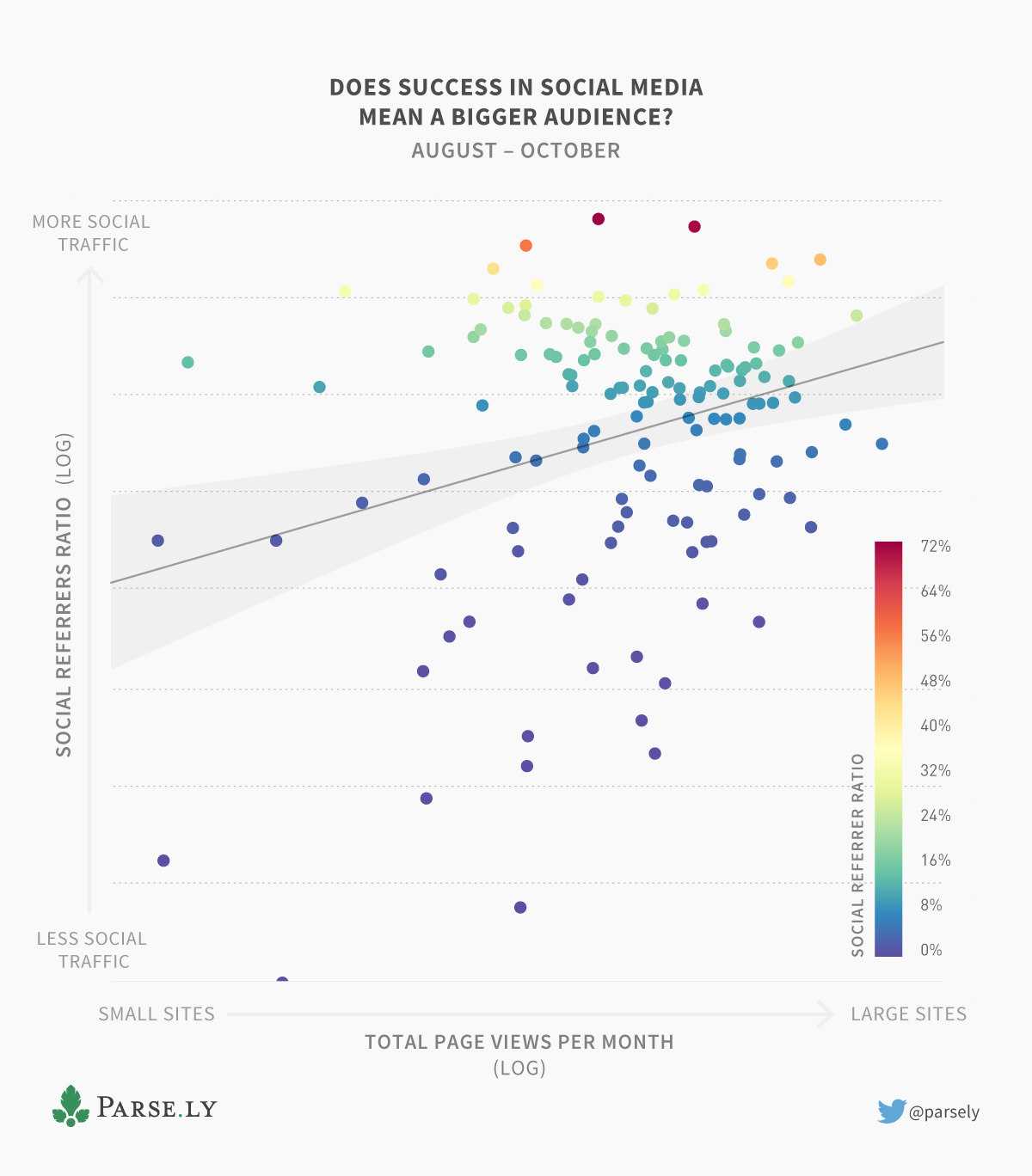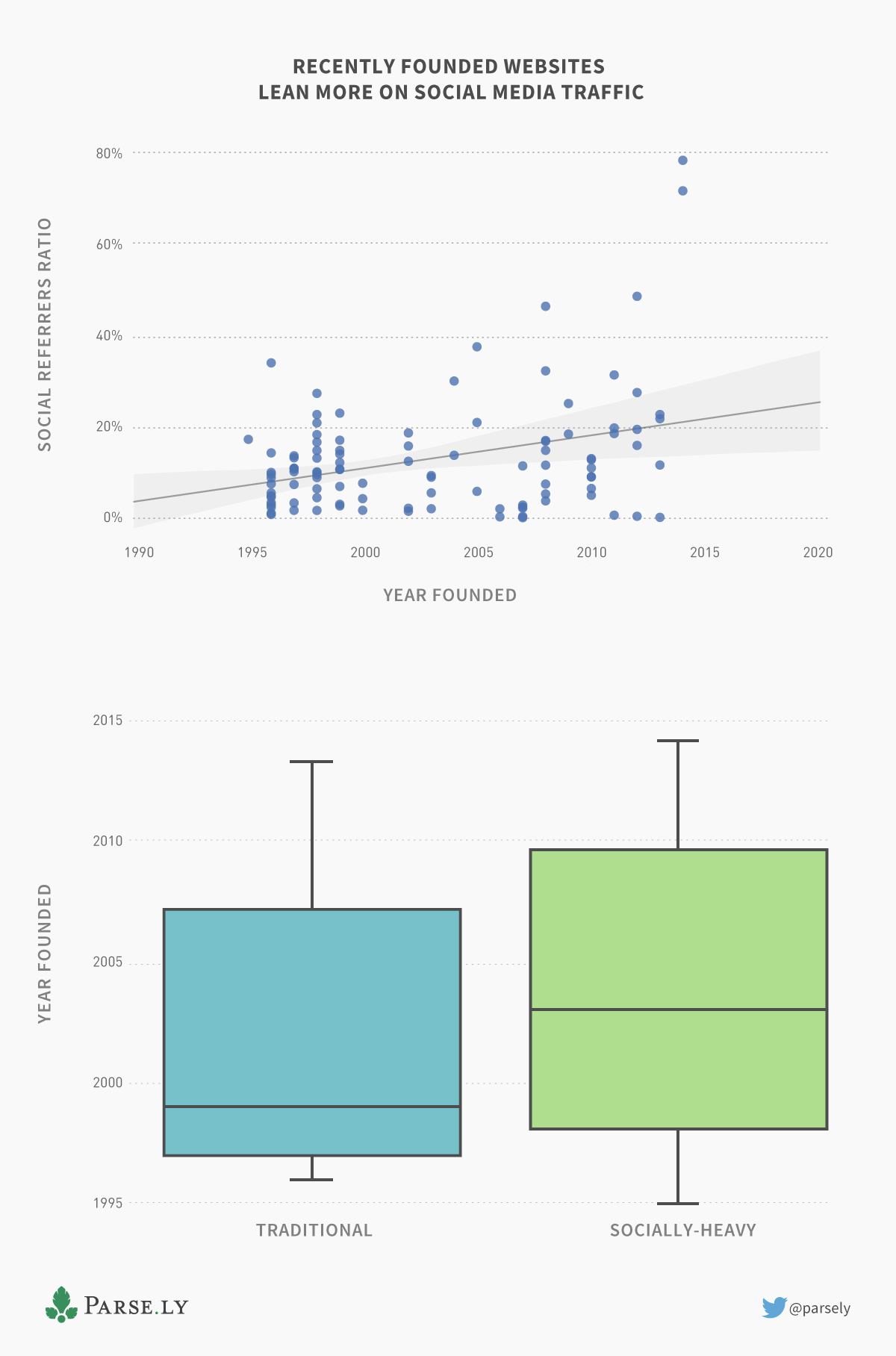Three Truths about Social Media and Your Readers
As publishers and digital media companies compete to reach new audiences, the battle lines have been drawn on social media sites. In our recently released Authority Report, we looked at year-over-year referral traffic to our network of hundreds of publishers. Social media sites sent a seven percentage point increase in social referrals, and a decrease in the amount of search traffic and linking sites, like other news outlets and aggregators.

Though these numbers fluctuate by publication, social media strategies command attention from anyone trying to reach an audience. What can we learn from these networks and the audiences from them to apply to the broader journalism and media industry?
People like social media because they can participate in the conversation; it demands effort and drives engagement by everyone involved, including you, the writer, editor or publisher. When done well, this engagement builds a positive relationship between you and your audience.
Social media also provides another source of insight into your audience. Understanding how your audience finds and shares content through social sites will help you put your readers first, an initiative we call “reader-first publishing”. (Why it matters here.) The more you listen to your readers and let their needs inform your decisions, the more readers you’ll attract and the more interactions with readers you will find yourself having.
But to make all that happen, you have to understand how your audience interacts with these networks. Here are three observations we made by analyzing our network of publishers when it comes to social media:
1. Audiences are already defining themselves
Your audience already sends signals about their preferences; you just haven’t listened to them yet. Check out where your existing readers are coming from by looking at your social referral traffic, and determine if that says anything about them or the coverage that they’re finding on your site.
Among our network of publishers, the sites that bring in the highest percentages of socially-referred traffic from certain networks often have very distinct topical coverage and formats, and they rarely overlap. Though we can’t identify individual publishers on our network, we’ve included a broad categorization the type of publications and formats that are popular with specific networks:

Even within one media property, individual sections, authors and topics attract readers from different networks. It pays to be specific in knowing where your audience spends their time online, outside of your site.
2. Success in social does not strongly correlate with other metrics.
Media discussions online often use individual sites’ self-reporting to benchmark the industry. For instance, when BuzzFeed reported that their Facebook traffic outstripped their Google referrals, re/code heralded the “The Year Facebook Blew Past Google.” But we wanted to see how true that held for the majority of large publishers. Is success in social the only path to a large readership? Not at all.
We examined a sample of our publishers’ traffic from August – October 2014 by plotting the “ratio of social referral traffic.” To calculate this we took the amount of traffic referred by social networks (Facebook, Twitter, LinkedIn, Pinterest, Google+ and StumbleUpon) divided by total page views. We found some positive relationship to indicate that more social referral traffic results in higher overall traffic, but our largest sites didn’t necessarily have the highest social ratios.

We did find two distinct groups, what we call “socially-heavy” sites, those above the regression line, and “traditional” sites, those below. A more complex understanding of what makes these sites successful, beyond their social media presences might give a better picture of successful digital strategies. One explaination? Earlier this year, Pew Research reported that Facebook and Twitter visitors don’t recirculate as well; they typically see less pages per visitor. Socially-heavy sites could be bringing in new readers at a higher rate, while traditional sites do a better job at creating loyal readers – and we’ll be checking this soon!
3. Age Matters.
What else differentiates the properties above and below the “social regression” line in the graph above? Turns out, the age of the publication plays a role as well. Newer publishers have an edge when it comes to getting a bigger social audience.
By looking at the founding-year of each site, we charted their correlation to social referrals and identified the medians for socially-heavy and traditional sites. The socially-heavy sites had a median of 2003, and included the most recent websites, whereas the traditional zone had a median of 1999*. We also found a small, but statistically significant correlation between the founding year and the social referral ratio. According to Parse.ly’s Algorithm’s Lead, Martin Laprise, the chance of this data just being “noise” is only 0.05%.

*These are the years the websites were founded, not the publications, if they have a print product associated with it. Though, it’s worth noting that many of the earlier online websites are associated with an existing print product, while more recent websites are often stand-alone digital companies.
As with many of our aggregate studies, we always encourage individual sites to examine their own audience, as with BuzzFeed, they may vary widely. Have you seen certain patterns from readers referred by social media sites? Leave us a comment about it below!